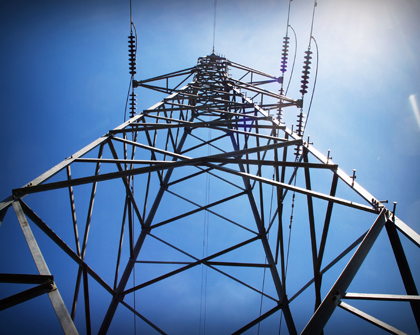The repowering of Argentina’s Embalse Nuclear Power Plant will extend its services for a further 30 years and increase its capacity by 5%. This building work aims to complement the growing demand for electrical energy in the region, maintain the share of nuclear power, and ensure the diversity of the energy matrix.
In the Republic of Argentina, the electrical sector is characterized by a supply of primary energy, much of which is thermal. This implies the consumption of hydrocarbons, especially natural gas, which is now understood to be a limited resource both domestically and globally, the scarcity of which is likely to increase. This prompts the need for policies that tend toward a diversification of the energy matrix, intensifying the use of renewable or high-availability sources such as hydropower, biomass, wind, solar, and nuclear power.
The Embalse Nuclear Power Plant (CNE) is in Embalse, Calamuchita department, Córdoba province, approximately 620 kilometers northeast of the City of Buenos Aires. This power station supplies the provinces of Mendoza, San Juan, San Luis, Córdoba, Entre Ríos, and Santa Fe and Greater Buenos Aires, the total estimated population of which was over 26 million people in 2014 (COSIPLAN, 2014)
The CNE is a 648-megawatt electrical power plant that has been operated commercially since 1984 but which reached the end of its lifespan in December 2015. The repowering process to extend its services for another 30 years began in 2007 and was broken down into three stages: (i) lifespan assessment; (ii) basic and precision engineering, contracts with firms, and purchase of machinery and materials; and (iii) implementation of building work, which began in January 2016.
The project is part of Project Group 5 in the COSIPLAN Project Portfolio’s MERCOSUR–Chile Hub. It represents an estimated investment of US$2.15 billion, US$240 million of which is from a CAF loan that has already been disbursed, while the remaining US$1.91 billion will come from Argentina’s national treasury and was included in the country’s 2016 budget. The project currently employs over 2,800 people and it is estimated that an additional 20% of indirect jobs will also be created.
Following the public hearing held in July 2016, the Secretariat of the Environment and Climate Change of Córdoba Province issued the Environmental Permit on July 22. The estimated completion date for the construction work is February 2018 and it is expected that the power station will then be in a fit state to begin a new lifespan as long as its first and will supply an extra 5% of electricity to the country, equivalent to 683 megawatts.
This building work includes upgrading processes and the replacement of components in the reactor and other systems so as to bring the power station in line with regulatory requirements and increase its capacity. The project includes technological advances and systems that aim to improve operational security and also entails the modernization and optimization of the turbogenerator and the thermal cycle.
Experiences from around the world and technological progress suggest that power stations that undergo lifespan extension processes become more energy efficient, are safer to operate and free of greenhouse gases, and use operating procedures that optimize all the resources they consume, thus protecting the environment and leading to greater social benefits.
In this sense, the CNE will help replace the use of nonrenewable hydrocarbons such as diesel, fuel oil, or natural gas and to reduce possible energy shortfalls caused by changes in water cycles.
It will also strengthen local firms in the nuclear power sector and bolster value chains by preserving the technological cluster that has developed in Argentina, promoting the involvement of local industry in the supply of equipment and services.
This upgrading work will play a part in building specialized knowledge among professionals, technicians, and Argentinian companies for the construction and operation of future nuclear power plants, and these skills and knowledge may even be exported to other countries.
Video of Construction Work at the Embalse Nuclear Power Station (link in Spanish)








